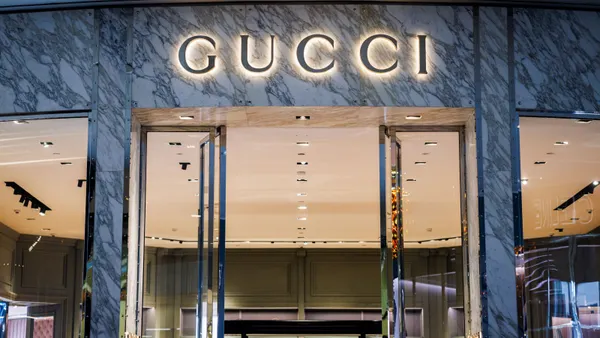Dive Brief:
-
TJX on Tuesday reported that second quarter net sales rose 5% to $9.8 billion, $6.1 billion of that from its U.S. Marmaxx unit (which includes retailers T.J. Maxx and Marshalls) and $1.4 billion from its U.S. Home Goods stores.
-
Consolidated comparable store sales rose 2%, on top of a 6% increase in the year-ago quarter, according to a company press release. Store comps at the company's U.S. Marmaxx unit rose 2%, while U.S. Home Goods comps were flat. Canadian comps rose 1%, while comps in the European-Australian operations rose 6%.
-
Net income in the period rose nearly 3% year over year to $759 million. Higher supply chain costs pressured margins: Gross profit margin for the quarter declined 0.7 of a percentage point year over year to 28.2%, in line with the company's guidance.
Dive Insight:
TJX appears to be mostly shrugging off recent recession and tariff jitters and is poised to gain from other retailers' troubles.
The company is one of those rare ones opening stores more often than closing them. During the second quarter the off-pricer expanded its store count by 31 for a total of 4,412, increasing its square footage by 4% year over year.
"We believe the share shift to off-price continues from department stores and retail closings/bankruptcies," according to emailed comments from Jane Hali & Associates analysts. "We feel the closing of the 675 Dress Barn stores will only add more traffic to off-Price."
CEO Ernie Herrman in his statement said he was "very pleased that customer traffic drove our consolidated comp and was up at each of our four major divisions,” noting the quarter was the 20th straight of customer traffic increases at TJX and its Marmaxx unit and that the current quarter is "off to a solid start."
TJX said it expects third quarter comps to rise 1%-2% overall and at Marmaxx. For the year, the company expects comps to rise 2%-3% for the unit. Nevertheless, comps are a sore spot, except overseas, noted GlobalData Retail Managing Director Neil Saunders.
Like some rivals in apparel, Marshalls has been heavily promotional of late in its women's business, though men's was strong, according to the Jane Hali analysts. Both Marmaxx banners are keeping their merchandising eye on the strongest trends in retail, with ample offerings of activewear, sneakers, wellness, beauty and home, Jane Hali analysts said. They also found that key brands there include Michael Kors and Kate Spade handbags as well as Ralph Lauren, Levi's and Urban Outfitters' Free People.
Saunders noted "deterioration" in merchandising, particularly at Home Goods, which he said could explain flat comps at the banner. "The 'samey' nature of the experience is at odds with the off-price promise of providing new and exciting products, thereby giving consumers reasons to visit regularly," he said in emailed comments."
Shoppers over the last six months lost some ability to find "relevant and exciting products" at TJX banners, according to GlobalData consumer studies. That could be a reflection of typical retail vagaries or "a subtle shift in consumer mood," according to Saunders. But it could also reflect "a tighter buying environment where there are fewer big-name branded products available."
The company may also be feeling some heat as competition intensifies in apparel, including the growth of resale and the addition of Macy's into the off-price market, according to Saunders' note. But, he added, these threat from these rivals were "only slight," while a "more serious threat this quarter came from the above average levels of discounting across many apparel retailers," which gave consumers more deals to choose from.
An economic downturn could actually help TJX by spurring more bargain hunting, but the company must also help itself, according to Saunders. "Overall, we remain favorable about TJX," he said. "However, we also believe that in the core US market, TJX needs to work much harder to fend off rivals and inspire consumers. The tighter control from big brands over where their product is distributed may hinder these efforts over the medium-term."












